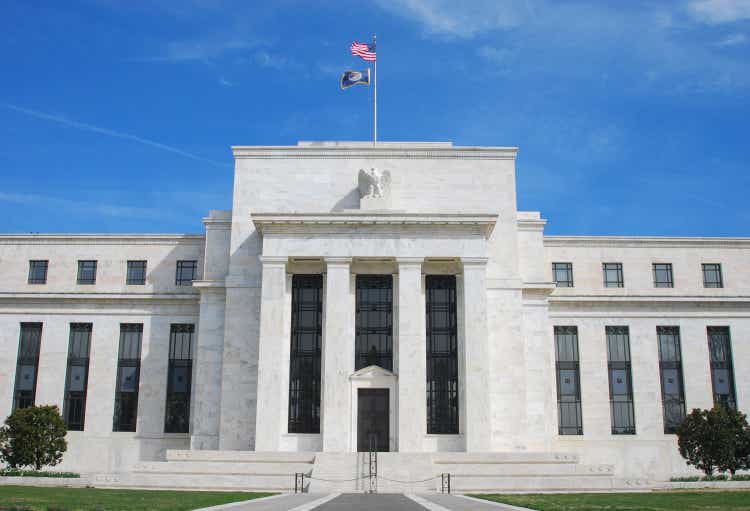uschools/E+ via Getty Images
Make no mistake about it. The Fed is now both in and out, and it will be a “wrenching experience.” They are “in” on raising rates. They have begun their inflation-fighting battle with a 75-basis point increase. Chairman Powell has clearly stated that the next rise, at the Fed’s next meeting in July, will be either 50 bps or 75 bps, depending upon the data. The program has now officially begun, but the length and breadth of it are clearly still unknowns.
The collateral implications are broad and also quite serious. They will be cutting their balance sheet, they have said. The recent FOMC minutes were clear, “In addition, the Committee will continue reducing its holdings of Treasury securities and agency debt and agency mortgage-backed securities, as described in the Plans for Reducing the Size of the Federal Reserve’s Balance Sheet that were issued in May.” Here is another great unknown. Will the Fed just allow for a run-off as bonds mature or begin aggressively selling securities, and which securities and where on the yield curve?
The upcoming answers will have a decided impact on both the Treasury bond market and the Agency market and, as a result, move the corporate bond markets along with them. In fact, everything tied to fixed income is now going to get prodded by the Fed’s actions. The bond markets are now under the gun, and wild swings in volatility are likely to ensue.
The other collateral implication is that the biggest buyer of Treasuries and mortgage-backed securities has now left the market and won’t be back anytime soon. Here the result of “supply and demand” come into play. The supply of Treasuries is unlikely to diminish, but the demand is now hampered by the Fed’s withdrawal, and so this will also push yields, in my opinion, to higher levels.
Where the supply is likely to drop, however, is in investment-grade corporates, high yield, and all other bonds with credit exposure due to higher yields. Make no mistake about it, many corporate balance sheets will feel the effect of higher borrowing costs, and this will play out in lower revenues and lower profits for many companies. The companies that are below investment-grade will also be seriously affected as borrowing costs skyrocket and as bankruptcies, in my opinion, will be on the rise. The days of cheap money have come to an end.
All of this will also spill over into the equity markets as corporate revenues and profits decline. The high valuations that have been in place are about to get hit, in my estimation. The tide has turned, and the Fed has turned it. The “wrenching experience” in fixed income will also be a “wrenching experience” in equities.
Price/earnings multiples have come down some, but the denominator of the ratio is still way out of whack, in my opinion. For example: the S&P is now trading at 15.2 times next year’s earnings, down from 19.2 months ago. However, if earnings fall 10% next year, then we are at 18.5 times 2023 earnings. That’s not a great place to be historically. Just so you know, the 10-year average forward year P/E ratio is 16.2%.
Yesterday’s reaction to the Fed’s decision was a “relief rally,” but I do not expect it to hold. More pain is coming, and now it is just a question of how to deal with it. My answers are cash and income strategies as appreciation plays come under severe stress.
The dollar is also going to be part of this equation. Even with the ECB about to enter the fray, I believe the dollar is headed to parity with the euro and that the yen will continue to sink. This also has serious implications for many American corporations, and it will also impact revenues and profits for many international companies both here and abroad. “Topsy Turvy” is going to be the new mantra, in my opinion.
All of this will also impact the labor markets. You can expect to see a decline in the jobs numbers. My guess is that is going to end up someplace between bad, very bad, and maybe even worse than that. An impending recession looms, and this will all have both economic and political implications.
“The worst mistake we can make would be to fail, which is not an option. We have to restore price stability . It is the bedrock of the economy.”
– Fed Chairman, Jerome Powell
Hunker down. Flack shields up. The days of wine and roses have ended.
The assault has begun.
Original Source: Author
Editor’s Note: The summary bullets for this article were chosen by Seeking Alpha editors.


Be the first to comment